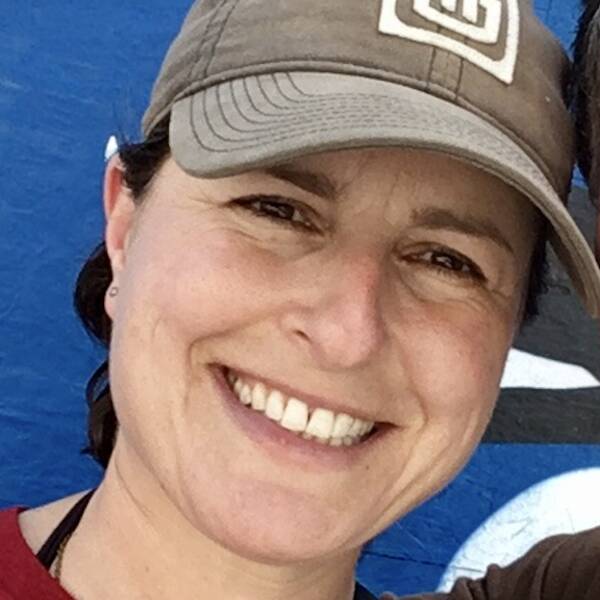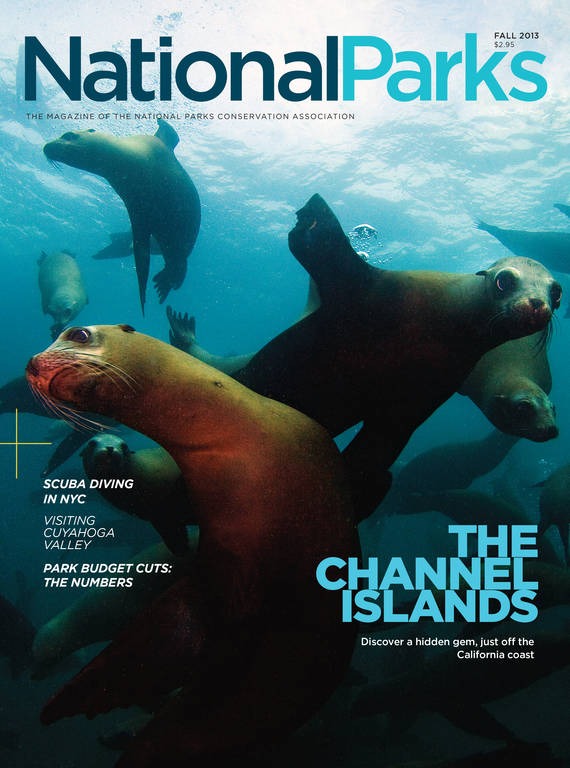Fall 2013
Hidden Valley
From bike paths to contra dances to fresh, local fare, Cuyahoga Valley National Park offers a quintessential Midwest experience.
I drove into Ohio’s Cuyahoga Valley National Park on a warm spring evening with my Japanese folding bike in tow. The first clues that this wouldn’t be a typical national park visit: No main gate, no entrance fee, and no friendly ranger with a map to set me on the right path. So, where to begin? The Winking Lizard, a popular watering hole in the town of Peninsula, seemed like a good place to contemplate the matter.
To visualize this park, imagine a 33,000-acre, oblong slice of Swiss cheese covering a section of northeastern Ohio, between Cleveland and Akron (see map, page 50.) The Swiss cheese holes are small pockets of privately owned non-park land. And this is where I found myself that first night—in the biggest of the holes, sitting at the Lizard bar, across the room from a large glass aquarium containing an iguana named Heisman.
Before long, two local landscape designers were helping me plan my adventure. They told me about the river and the region’s farming history, but mostly, they sang the praises of biking on the Ohio & Erie Canal Towpath Trail—including bike-at-night events and Cuyahoga Valley Scenic Railroad’s Bike Aboard program.
When I stood to leave, the chattier of the pair opened his colorful duct tape wallet, and I expected him to hand me a business card. Instead, he pulled out an orange heart, slightly asymmetrical, like it was cut out by a schoolboy. I flipped it over in my hand and realized it was a reflective sticker intended for my safety on the trail. “Put it on your bike,” he said. “Or your helmet.” I laughed. “I’ll do that,” I said. Then I headed back into the park, where I unpacked my bags, made a plan for the following day, affixed the sticky little heart to my bike, and fell sleep to the sound of a waterfall.
An Everyday Park
TRAVEL ESSENTIALS
When I travel, I like to visit small towns. And parks. But I don’t remember any destination offering both with the seamlessness I found in Ohio’s only national park. Relatively young among its peers, Cuyahoga Valley has already become a trailblazer, demonstrating how a national park visit can be quotidian, not just once-in-a-lifetime. As one local told me, “How many times do most people go to Yosemite? You ask people here how often they visit our park, and they say, ‘Every day.’”
On a map, it’s easy to distinguish Cuyahoga’s backbone: a bundle of vertical lines comprising rivers, canals, railroads, and scenic roads. Once a key player in our inland waterway system, the Ohio & Erie Canal began operating in 1827, when towns like Peninsula boomed with boat-making activity. But the canal’s use declined after the introduction of the railroad, and it was abandoned completely after the Great Flood of 1913.
In the 1960s, the Cuyahoga Valley was threatened with major development. Meanwhile, the Cuyahoga River’s claim to infamy was that it burned—multiple times—thanks to all the debris and sewage it carried. But it was the 1969 fire that helped inspire our first Earth Day, and it wasn’t long before locals began fighting to save the river and the land that surrounded it. In 1974, Congress created Cuyahoga Valley National Recreation Area, and in 2000, it became a national park.
Today, the Towpath Trail stretches 84 miles through the Ohio & Erie Canalway, about one-quarter of which runs through the park along the Cuyahoga River Valley. More than 125 miles of hiking, biking, and horseback riding trails line the park, and conservation efforts have led to the repopulation of wildlife such as coyotes and eagles. Early in my visit, noticing how urban sprawl lurked at the park’s borders, I got the sense that this landscape was protected just in the nick of time.
Two Wheels and Dance Shoes
Early the next morning, I left the Inn at Brandywine Falls and walked toward the sound of rushing water, just a few hundred yards away. The 65-foot waterfall is one of the park’s main attractions, along with the Ledges Trail and Beaver Marsh. It’s just feet from a road, but it didn’t take me long to hike deeper into the woods, where the loudest noise was a swaying branch that I mistook for a creaky door.
After my hike, I returned to the inn for breakfast with two other guests—European medical sales reps taking a detour from work—and the owners. George and Katie Hoy have been running the house for 25 years. I asked George what draws people to the park, and he said, “It’s not any one thing that brings people to the park. It’s the diversity of things.”
Intending to tackle that diversity, I began what would become a routine during my four-day visit: I drove into Peninsula, parked my car, unfolded my bike, and set off on the towpath. Crushed limestone crackled under my tires as I passed school groups, commuters, and runners. I pedaled under a canopy of trees, over a boardwalk, past a marsh, and along the river.
More than anything, biking here is practical. It’s more direct to reach some spots by bike than by car, and every few miles along the path, I found something of interest—a visitor center, an exhibit, a short hike. Seven miles north of Peninsula, I ended up at a spot where volunteers were using chainsaws to remove invasive plants like honeysuckle from the side of the towpath.
Just before sunset, I headed to the old Boston Township School House for a contra dance. “People wonder what a park ranger is doing at a contra dance,” Rebecca Jones announced at the beginning, wearing a long ranger skirt and flat dance shoes. She explained that people in the Cuyahoga Valley have been gathering to dance for 200 years. “It’s only a dance,” she reminded us. “If you mess up, just give your partner the most beatific smile, and if he doesn’t forgive you, don’t dance with him again.”
A band called Hu$hmoney kicked off the night with a reel, and the caller began with our instructions. My first partner wore a blue bandanna around his forehead and was suitably forgiving. Later, during a refreshment break, I learned that one man drives an hour to the event each week and is known as much for his homemade cookies as his dance moves.
A Little Country, a Little Rock ‘n Roll
Several times each day during my visit, an obliging local informed me that I was only 30 minutes from Cleveland’s Rock and Roll Hall of Fame. I also kept hearing that Cuyahoga Valley was an “urban park”—after all, it’s within a one-hour drive of more than 4 million people in Cleveland, Akron, and Canton. But as I drove and biked about, I was convinced otherwise. Only in the country do you find hand-written “eggs and firewood” signs, train passengers and bystanders who wave at each other, and lines of motorcyclists leaning into windy roads. On the way to dinner one night on a busy street, I saw a happy-go-lucky goose straddling the double yellow line—country all the way.
If that isn’t proof enough, consider the land. Cuyahoga Valley, where hundreds of farms once dotted the landscape, is the only national park that sets up long-term leases with locals who practice sustainable agriculture within its borders. Today, the park partners with the Countryside Initiative, which works with 11 small farms, including a picture-perfect goat farm and a pick-your-own berry farm. One evening, I went to a lecture on herb gardening at the Spicy Lamb Farm, which transports its flock of sheep to “mow” various urban grassy areas. A couple days later, I had lunch at Sarah’s Vineyard, which grows nine grape varieties and hosts a wine festival every summer.
Many of the farmers participate in the Countryside Farmers’ Market, and I hit the first one of the season on a Saturday morning. On the way, I pulled over to the side of Bath Road to see the great blue heron nests, a bustling, Dr. Seuss-like scene that had been described to me as “pterodactyl meets airport.” The gangly birds, with wingspans of nearly seven feet, flew in and out of the heronry, soaring, circling, and landing with such grace that they seemed no weightier than an origami crane. On one sycamore tree, I counted 39 nests. It was tempting to stay and watch the herons all day, but I eventually pulled myself away from the squawking and chattering and headed to what could only be described as the human equivalent—the lively scene at the farmers market.
I fueled up with a sampler of pierogies, award-winning goat cheese, crunchy hemp seeds, and fresh fruit, and headed back to Peninsula to catch the train. At last, I was taking the locals’ advice and checking out Bike Aboard. For $3, you board at any of the train stations (waving one hand means “hello”; waving two hands means you want to board with your bike), travel as far as you want in one direction, and bike back—or vice versa.

National Parks
You can read this and other stories about history, nature, culture, art, conservation, travel, science and more in National Parks magazine. Your tax-deductible membership donation of $25 or more entitles…
See more ›My fold-up and I waited with a dozen other riders as the train blew its whistle and pulled into the station. We handed our bikes to a guy who stowed them in an empty train car, then the cyclists got comfortable in the adjacent car.
I sat next to another first-timer, a young woman with a pink Cleveland Browns backpack and blue nail polish who told me all about composting. Forty-five minutes later, at the last stop, I exited and began my return bike ride. Between looking for eagle nests and stopping for snacks, I spent the 13-mile trip daydreaming about a better world, in which Bike Aboard trains were always available to transport cyclists after a one-way ride.
Back in Peninsula, I stopped at the Winking Lizard to see if I could find the bequeather of the reflective heart, to tell him about my ride. He wasn’t there, so I drove south in the park toward the Beaver Marsh, a former junkyard that was cleaned up by volunteers… and beavers. I parked my car, unfolded my bike, and hit the towpath one last time. I couldn’t find the beavers either, but I stood on the boardwalk and saw a Baltimore oriole and a cardinal, and I watched lily pads flopping in the breeze. At dusk, I pedaled back to the parking lot and drove off—the fold-up bike and orange heart in the back of the car, leaning into the curves of the country roads.
About the author
-
 Melanie D.G. Kaplan Author
Melanie D.G. Kaplan AuthorMelanie D.G. Kaplan is a Washington, D.C.-based writer. She is working on a nonfiction book, "Science & the Hound," to be published in 2025.



